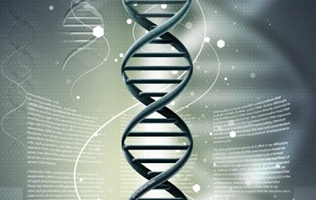- Digitalization of knowledge
- Human language technologies
- Bioinformatics
- Data mining
- Spatial data
- Mathematical modelling
Bioinformatics
Originally, the term bioinformatics was used to refer to any application of IT in life sciences but today it is mostly used in the context of specific applications of IT in genetics and molecular biology. Exploration and study of genetic code and gene mapping are extremely important for a large number of disciplines (biomedicine, pharmacy, agriculture...).

A DNA molecule's structure is identical in all living beings: it consists of two long twisted chains made of phosphates and deoxyribose. For each sugar molecule, one of the four nucleobases (A - adenine, G - guanine, C - cytosine, T - thymine) is bound. There are several sequencing techniques that can translate genetic material into sequences of those characters. Bioinformatics as a discipline is interested in those sequencing methods, as well as methods for analyzing the sequencing. These methods are based on mathematics and computer science, and their sub-fields (statistics, mathematical and stochastic models, data mining, artificial intelligence etc.). Depending on the topic of study, there is a variety of bioinformatics sub-fields called omics, such as genomics, metagenomics, proteomics, epigenomics etc. Applications of these technologies are numerous in various sciences; from medicine to agriculture.
Bioinformatics is a well-developed and an important interdisciplinary scientific field in the world. Many different institutes and universities are conducting bioinformatics research and students are getting increasingly more interested in this field but in our country, bioinformatics is only in its beginnings. A group of scientists from the University of Belgrade, gathered around the Group for Bioinformatics at the Faculty of Mathematics, have given a major contribution to the development and popularization of bioinformatics in Serbia (CIPB members were and still are active members of this group). One of the main goals of our Center is to ensure further promotion and development of bioinformatics in Serbia. We also urge experts in the fields of genetics, breeding and selection to share their ideas with us and help us improve agricultural research within bioinformatics.

 Srpski
Srpski English
English